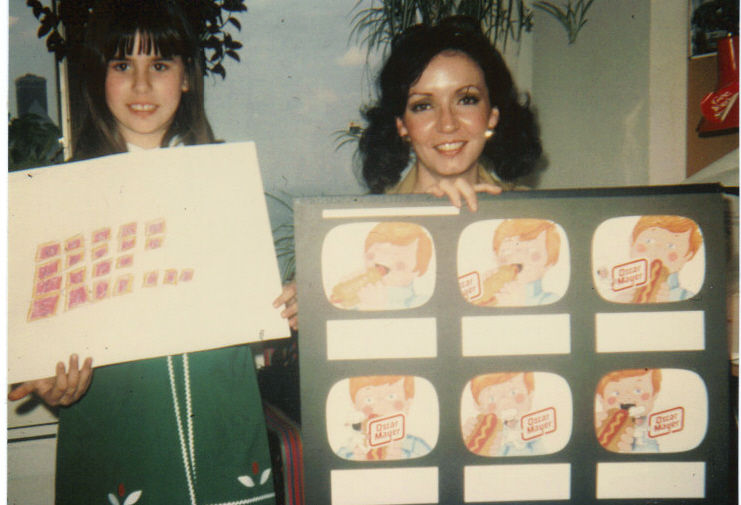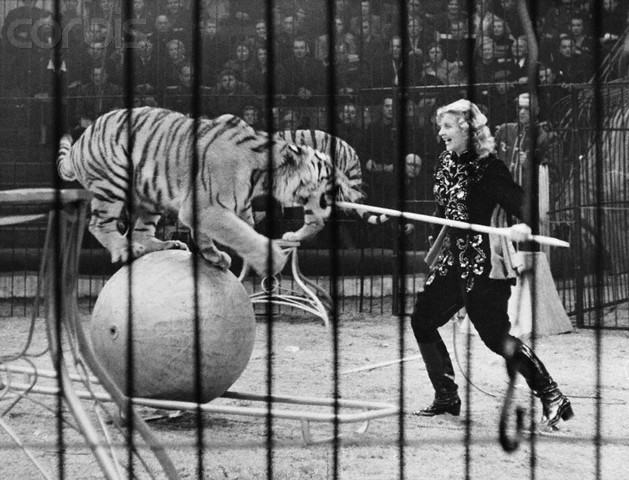“By saying that someone becomes the owner of something, we are referring to a market transaction, while by saying that something is a good belonging to someone, we emphasize the fact that it has been incorporated into the world of someone, of which it has become an integral part.”
—Michel Callon and Fabian Muniesa, 2005: 1233
One of the most important concepts in contemporary economic sociology—the notion of “singularity”—can be illustrated through a well-known advertisement from the 1970s: the “My Bologna Has a First Name” campaign for Oscar Mayer. This short TV spot featured a song whose lyrics many Americans, young and old, know by heart:
My bologna has a first name,
It’s O-S-C-A-R.
My bologna has a second name,
It’s M-A-Y-E-R.
Oh, I love to eat it every day,
And if you ask me why I’ll say,
‘Cause Oscar Mayer has a way with B-O-L-O-G-N-A.
Here’s a link to the original 30-second spot.
The central conceit of the ad, that consumers can differentiate among commodity lunchmeats such that one can be singled out as “my bologna,” is a nice illustration of the process of singularization, in which supply and demand relationships are shaped not only by prices but by the qualitative attributes of products. When a product is considered in a class by itself, that is the ultimate expression of singularization, as Harvard economist Edward Chamberlin first described it in his 1933 book, The Theory of Monopolistic Competition (probably one of the most lucid and sensible books ever written by an economist about markets—highly recommended).
Michel Callon and Fabian Muniesa took this idea further by looking at what happens to products after purchase. As the quote above from their 2005 Organization Studies article indicates, Callon and Muniesa are interested both in the market transaction (the price, the exchange of money for goods) and in the subsequent process through which the purchased object becomes integrated into the life and identity of the new owner. This illustrates the special contributions of sociology to the analysis of economic behavior: while economists (even the behavioral sort) would consider the purchase the endpoint of the analysis, Callon and Muniesa can go much further, delving into the social lives of transacted objects—a inquiry that until recently has been left to practitioners in marketing and consumer research.
One reason the Oscar Mayer bologna spot remains one of the most famous commercials of all time—35 years after it first appeared—is precisely because it illustrates a common but rarely discussed aspect of everyday economic experience: the bonding and identification process which occurs between consumers and their products. Many of us have these experiences of what psychiatrists call “cathexis” with consumer goods, but lack a common vocabulary to discuss this experience, since it falls outside the hegemonic discourse of economics—except perhaps as a perplexing “stickiness” in consumers’ brand loyalty or in producer pricing, virtually all of which gets black-boxed as “irrationality” or “noise” in models otherwise devoid of social influences. A few astute cultural critics have tried to unpack this process of bonding between products and consumers, notably Herbert Marcuse, who wrote of consumption-crazed 1960s America, “The people recognize themselves in their commodities; they find their soul in their automobile, hi-fit set, split-level home, kitchen equipment.”[1] But other than these occasional critical reflections, the consumer experience and the post-purchase fate of objects were simply excluded from scholarly inquiry, leaving the field to practitioners.
Thus, the Oscar Mayer bologna commercial emerged not from a theoretical model consumers’ relationships to products, but through inductive inquiry—including focus groups consisting of children as participants (a methodological innovation, since virtually all consumer research prior to the 1970s was done with adults). In fact, my mother—who worked at the advertising agency handling the Oscar Mayer account—says that the phrase “my bologna” actually came from me! Apparently, I opened the refrigerator one day to make a sandwich, and was dismayed to find, instead of the Oscar Mayer bologna I expected, some alien brand of lunch meat, at which I exclaimed, “Mom, that’s not my bologna!” I can’t vouch for the accuracy of this story, since I have no memory of the event, but I do know that the term “my bologna” struck a whole generation of kids as an apt description of their relationship with a branded product.

That in itself is rather strange upon further reflection. There is something particularly odd about identifying with one’s food to the point of anthropomorphizing it. “My bologna” is so fully singularized that it has both first and last names! The jingle almost makes it sound as if the lunch meat is an imaginary friend, except that it’s embodied and edible. So the product is defined by the child (as “my bologna”) while at the same time, the product defines the child; this is not made explicit in the advertisement, but is a kind of unspoken consequence of the cathexis between the lunch meat and its consumer. The child identifies with the brand Oscar Mayer as—the advertisers hope—the adolescent will later identify with specific brands of jeans, and the adult will identify with certain brands of automobiles and laundry detergent. (I examined this phenomenon at length in Pop Finance, in the context of investors’ stock picks; see particularly Chapter 2 on “identity investing.” Socially-responsible investing is a major instantiation of this phenomenon, as is the rapid growth of niche investment funds designed to meet the highly specific “economic-expressive” needs of various religious sects, along with secular interest groups.)
This process of mutual definition between product and consumer is termed “co-elaboration” by Callon and Muniesa, and—in my opinion—it’s a brilliant insight. Two points strike me as particularly important to note. The first is that the “sociotechnical process” of consumption does not stop with the purchase of goods: in fact, that’s only the beginning. Second, Callon and Muniesa take a radical, innovative theoretical stance simply by refusing to give precedence to human agents in their model of economic relations: products and consumers enjoy equal status and powers of defining reality. Indeed, tools of calculation—including everything from pencil and paper to abaci and computers—are co-equals with humans and products, sometimes competing, sometimes cooperating with one another.
This recalls the writings of science fiction and cyber-punk authors from Arthur C. Clarke and Phillip K. Dick through William Gibson and Neal Stephenson, in which carbon-based and silicon-based life forms exist in tension with one another. The theme of much of this literature concerns the emergent agency of the latter (such computers or robots and cyborgs) against their creators; here, we could think of Hal9000, the computer in the film “2001: A Space Odyssey,” who becomes a character in the narrative by defying his intended function as a tool for astronauts and asserting a will of his own—“I’m sorry Dave, I can’t do that.” Fast forward 20 years from the making of that film to the late 1990s, when children around the world began playing with “tamagotchis”—keychain-sized electronic “pets” that expressed needs for food and water, and which could die from lack of care. And sure enough, by 2001, humans were clearly accustomed to attributing agency and independence to the products and tools they bought, snapping up “Personal Digital Assistants” to fill the roles once occupied by human secretaries and spouses.
By putting human agents on an equal footing with “products” and “tools,” Callon and Muniesa do much moe than open the door to considering products as semi-autonomous agents in economic life, which is radical enough in itself. In addition, the theory of “co-elaboration” provides a way for scholars to examine a phenomenon of increasing importance in contemporary consumer activity: the ways in which products and tools change the people who buy and use them. (This has become a popular topic among futurists, many of whom write of an imminent “posthuman, biocybernetic” era in which humans and machines become seamlessly integrated.) Marketing practitioners, particularly in high-tech, have been aware of this and leveraged its profit potential for some time—perhaps most notably in the case of Apple Computer. After circling the drain in the late 1990s, leading to predictions of its imminent demise, the firm not only survived but thrived by treating the purchase of their electronic devices (supposedly their main business) as simply the beginning of a lengthy consumption process whose object was the personalization—singularization, if you will—of their products. However much profit Apple makes from the sales of iPods and MacBooks, the business model clearly centers on the subsequent purchases which enable consumers to make the products their own—notably music and software from iTunes.
These consumption possibilities, in turn, change us as consumers. Anyone old enough to remember wax LPs knows that people listen to music very differently now that it is no longer delivered to us via albums, which constrained listeners to consume songs in full and in a specific order. Naturally, there were ways to get around those constraints (getting up and moving the needle on the record player to skip to a favorite song, or creating a “mix tape” by recording songs from multiple albums), but they were cumbersome and inconvenient. Now, instead of listening to music in a format created by others, we can readily and cheaply create our own musical content and play order. We can buy music in much smaller quanta than were available even a decade ago, and due to the lowered cost of search, we may broaden our listening habits and preferences because we can buy one song at a time rather than investing in whole albums.
Recognizing the socio-cultural implications of economic activity turned Apple Computer from a dying firm to one of the most successful in its industry. Other computer manufacturers, like Hewlett-Packard, Dell and Compaq, did not see these possibilities, and instead saw themselves in a traditional economic way, as sellers of computers and other electronic equipment; their main concern was to make the sale. To the extent that they were concerned with what happened to their products after the sale, it was only in a technical sense, such as selling replacement toner and ink cartridges. The social life of products, and the ways that products can exert social influence on consumers, was not part of their business model. Those firms are suffering economically, while Apple has been doing better than ever.
By raising such issues as the “co-elaboration” of products and consumers to the level of scholarly inquiry, Callon and Muniesa’s theory showcases the strengths of a sociological approach to economic issues. In essence, they show how economic sociology picks up where economists leave off, examining phenomena of great theoretical and practical interest that often fall between the disciplinary cracks within social science. Their theory allows questions that have formerly been the domain of marketing and consumer research practitioners—questions about the post-purchase “lives” of products, how products shape and define their consumers, and how consumers use products as tools to understand themselves and make themselves understandable to others—available for sociological inquiry. This gives us reason to look forward to a future of fascinating research in hitherto un- or under-explored realms.
 Once upon a time, the phrase “The Lady or the Tiger?”–taken from an 1882
Once upon a time, the phrase “The Lady or the Tiger?”–taken from an 1882 